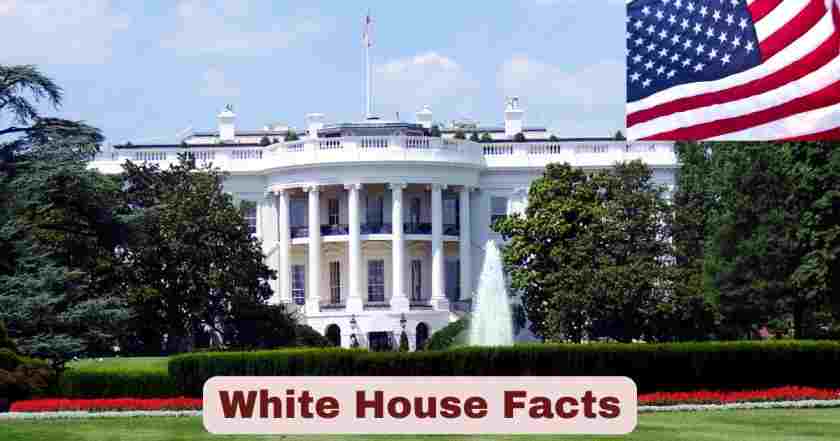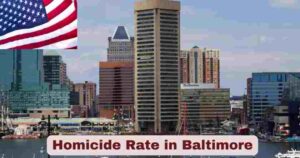White House in US 2025
The White House stands as the most iconic symbol of American democracy and presidential power, serving as both the official residence and primary workplace of the President of the United States. Located at 1600 Pennsylvania Avenue in Washington, D.C., this magnificent Georgian-style mansion has witnessed over two centuries of American history unfold within its walls. From hosting world leaders to making critical decisions that shape global affairs, the White House remains at the center of American political life in 2025.
As we examine the White House in 2025, remarkable developments continue to transform this historic residence. Under President Donald J. Trump’s current administration, significant structural changes and modernization efforts are underway, including the ambitious $200 million ballroom project announced for construction beginning in September 2025. The White House complex has evolved far beyond its original design, now encompassing 132 rooms, 35 bathrooms, and 6 levels, making it one of the most complex residential structures in the world. These comprehensive statistics and facts provide insight into the operational scale, architectural grandeur, and historical significance of America’s most famous home.
White House Facts 2025
| White House Facts Category | 2025 Statistics | Details |
|---|---|---|
| Total Rooms | 132 rooms | Complete residential and office spaces |
| Bathrooms | 35 bathrooms | Throughout all 6 levels |
| Building Levels | 6 levels | Including basement and sub-basement |
| Total Doors | 412 doors | Interior and exterior access points |
| Windows | 147 windows | Providing natural light and security |
| Fireplaces | 28 fireplaces | Historic and functional heating sources |
| Staircases | 8 staircases | Connecting all building levels |
| Elevators | 3 elevators | Modern accessibility features |
| Kitchen Capacity | 140 guests | Maximum dinner service capability |
| New Ballroom Size | 90,000 square feet | Under construction for 2025-2026 |
| Ballroom Seating | 650 people | Planned capacity for state functions |
| Ballroom Cost | $200 million | Private funding for construction |
| Construction Start | September 2025 | Official groundbreaking timeline |
| Building Style | Georgian Palladian | Neoclassical architectural heritage |
The White House building statistics for 2025 reveal the remarkable scale and complexity of America’s presidential residence. With 132 rooms spread across 6 levels, the White House functions as both a family home and the epicenter of executive government operations. The 35 bathrooms throughout the complex ensure adequate facilities for the hundreds of staff members, visitors, and dignitaries who pass through its halls daily. The 412 doors and 147 windows represent not just architectural elements but critical security features that have been carefully planned and maintained over decades.
Perhaps the most significant development in White House infrastructure for 2025 is the ambitious $200 million ballroom project that will add 90,000 square feet of event space with seating for 650 people. This massive undertaking, privately funded by President Trump and donors, represents the largest single addition to the White House complex in modern history. The 28 fireplaces throughout the residence continue to serve both functional and historical purposes, while the 8 staircases and 3 elevators provide essential vertical transportation throughout the six-level structure. The White House kitchen’s capacity to serve 140 guests simultaneously demonstrates the sophisticated logistical capabilities required for state dinners and official entertaining.
White House Building Specifications 2025
| Specification Category | Current Measurements | Historical Context |
|---|---|---|
| Floor Area | 55,000 square feet | Main residence footprint |
| Lot Size | 18 acres | Total White House grounds |
| Building Height | 70 feet | From ground to roof peak |
| Wall Thickness | Stone and brick construction | Original 1792 specifications |
| Renovation Cost | $5.7 million (1952) | Equivalent to $69 million today |
| Annual Maintenance | $4 million annually | Estimated operational costs |
| Security Perimeter | Classified dimensions | Enhanced post-9/11 measures |
| Staff Quarters | Multiple residential wings | Live-in staff accommodations |
| Press Briefing Room | 49 seats | Media accommodation capacity |
| Oval Office Size | 35 feet by 29 feet | Presidential workspace dimensions |
| State Dining Room | 140 person capacity | Formal entertaining space |
| East Wing Office Space | 3 floors | First Lady and staff offices |
| West Wing Office Space | 2 main floors | Executive staff workspace |
| Rose Garden Area | 125 feet by 60 feet | Outdoor ceremonial space |
The White House building specifications in 2025 showcase the remarkable engineering and architectural achievement that this structure represents. The main residence encompasses 55,000 square feet of floor space situated on an 18-acre complex, making it one of the most secure and well-maintained government buildings in the world. The building’s 70-foot height creates an imposing presence that reflects the dignity and power of the American presidency while maintaining the elegant proportions of Georgian architecture.
The $4 million annual maintenance budget reflects the enormous cost of preserving this historic structure while adapting it for modern presidential needs. The 1952 renovation cost of $5.7 million (equivalent to $69 million in today’s currency) demonstrates the massive investment required to maintain structural integrity while preserving historical authenticity. The Oval Office dimensions of 35 feet by 29 feet provide the President with an intimate yet formal workspace, while the State Dining Room’s capacity for 140 people enables elegant diplomatic entertaining. The Rose Garden’s 125 by 60-foot dimensions create a picturesque outdoor venue for ceremonies and press events, contributing to the White House’s role as a symbol of American democracy and diplomatic engagement.
White House Economic Impact 2025
| Economic Category | 2025 Financial Impact | Economic Scope |
|---|---|---|
| Annual Operational Budget | $50+ million | Direct government expenditure |
| Staff Payroll | $40+ million annually | Employee compensation costs |
| Maintenance and Utilities | $4+ million annually | Building operational expenses |
| Security Budget | Classified amount | Secret Service and protection |
| Tourism Revenue | $500+ million annually | D.C. area economic impact |
| Ballroom Construction | $200 million investment | Private funding commitment |
| Construction Jobs | 500+ positions | Direct employment creation |
| Visitor Spending | $300+ per person | Average tourist expenditure |
| Hotel Industry Impact | $100+ million annually | Accommodation revenue |
| Restaurant Revenue | $75+ million annually | Dining establishment impact |
| Transportation Services | $50+ million annually | Tour and travel industry |
| Retail and Souvenirs | $25+ million annually | Gift shop and merchandise |
| International Trade Benefits | Billions in agreements | Diplomatic economic outcomes |
| Media Industry Impact | $20+ million annually | Broadcasting and journalism |
The White House economic impact in 2025 extends far beyond its operational budget, generating significant economic activity throughout the Washington D.C. metropolitan area and nationwide. The annual operational budget exceeding $50 million supports hundreds of direct employees while creating thousands of indirect jobs through security services, maintenance contracts, catering operations, and specialized support services. The tourism revenue generated by 1.5+ million annual visitors contributes substantially to local hotels, restaurants, transportation services, and retail establishments throughout the nation’s capital.
The $200 million ballroom construction project beginning in September 2025 represents a major economic stimulus, creating construction jobs while requiring specialized materials, architectural services, and engineering expertise from across the country. The White House’s role in international diplomacy generates immeasurable economic benefits through trade negotiations, international agreements, and foreign policy decisions that impact global markets. The security industry surrounding White House operations supports numerous private contractors and specialized service providers, while the media infrastructure required to cover presidential activities creates jobs in journalism, broadcasting, and communications technology. The symbolic value of the White House as America’s most recognizable building contributes to national tourism, international prestige, and soft power projection that benefits American economic interests worldwide, making it one of the most valuable and economically significant buildings in the world.
White House Staff and Operations in the US 2025
| Operational Category | 2025 Numbers | Functional Responsibilities |
|---|---|---|
| Total White House Staff | 450+ employees | Executive residence operations |
| West Wing Staff | 150+ personnel | Presidential advisors and support |
| East Wing Staff | 50+ employees | First Lady’s office operations |
| Residence Staff | 95+ workers | Housekeeping and maintenance |
| Security Personnel | Classified numbers | Secret Service protection |
| Kitchen Staff | 5 full-time chefs | Culinary operations team |
| Groundskeeping | 18+ gardeners | Landscape maintenance crew |
| Maintenance Workers | 20+ technicians | Building systems and repairs |
| Administrative Staff | 75+ employees | Clerical and support services |
| Communications Team | 25+ specialists | Media and technology support |
| Medical Staff | 24/7 medical unit | Presidential health services |
| Transportation Staff | Multiple departments | Vehicle and travel coordination |
| Visitor Services | Tour coordination team | Public access and education |
| Annual Payroll | $40+ million | Total staff compensation |
The White House staff operations in 2025 encompass a complex organizational structure that supports both the presidential family’s residential needs and the executive functions of government. With 450+ total employees working across various departments, the White House operates as a small city with specialized services ranging from culinary arts to advanced security protocols. The West Wing staff of 150+ personnel includes senior advisors, policy specialists, and communication professionals who directly support presidential decision-making and administration operations.
The East Wing’s 50+ employees focus primarily on the First Lady’s initiatives and social functions, while the residence staff of 95+ workers maintains the impeccable standards expected in America’s most famous home. The 5 full-time chefs manage everything from family meals to state dinners for hundreds of guests, supported by 18+ groundskeepers who maintain the stunning 18-acre grounds. The annual payroll exceeding $40 million reflects the significant investment required to operate this complex institution, where 24/7 medical units ensure presidential health and multiple transportation departments coordinate the intricate logistics of presidential travel and security.
White House Visitor Experience in the US 2025
| Visitor Statistics | 2025 Data | Access Information |
|---|---|---|
| Annual Visitors | 1.5+ million people | Pre-pandemic restoration levels |
| Daily Tour Capacity | 2,000+ visitors | Scheduled public access |
| Tour Duration | 45-60 minutes | Self-guided experience |
| Advance Booking | 21 days required | Security processing time |
| Tour Rooms | 6 public rooms | Historical and state areas |
| Group Size Limit | 10 people maximum | Security and space constraints |
| International Visitors | 25% of total | Global interest statistics |
| School Groups | 300+ annually | Educational program participation |
| VIP Tours | Limited availability | Congressional and diplomatic access |
| Holiday Decorations | Seasonal displays | Special viewing opportunities |
| Gift Shop Revenue | $2+ million annually | Souvenir and educational materials |
| Accessibility Features | Full ADA compliance | Universal access accommodations |
| Virtual Tours | Online availability | Digital accessibility options |
| Security Screening | 15-20 minutes | Entry processing time |
White House visitor access in 2025 has returned to robust levels with 1.5+ million annual visitors experiencing America’s most iconic residence through carefully managed tour programs. The daily capacity of 2,000+ visitors requires 21-day advance booking to accommodate security processing and ensure optimal visitor experiences. The 45-60 minute self-guided tours showcase 6 public rooms including the State Dining Room, Blue Room, Green Room, Red Room, East Room, and Cross Hall, providing glimpses into both historical significance and contemporary presidential life.
International visitors comprising 25% of the total demonstrate the global fascination with American democracy and presidential history, while 300+ annual school groups participate in educational programs that inspire civic engagement. The 10-person group size limit ensures intimate experiences while maintaining security protocols and crowd management. Gift shop revenues exceeding $2 million annually reflect visitor enthusiasm for commemorative items and educational materials. The full ADA compliance and virtual tour options ensure that the White House remains accessible to all Americans, while 15-20 minute security screening processes balance necessary protection with visitor convenience, making the “People’s House” truly welcoming to citizens from across the nation and around the world.
White House Historical Significance in the US 2025
| Historical Milestone | Significance | Legacy Impact |
|---|---|---|
| Construction Began | October 13, 1792 | First cornerstone laid |
| First Presidential Resident | John Adams (1800) | Established presidential tradition |
| War of 1812 Damage | August 24, 1814 | British forces burned structure |
| Reconstruction Period | 1815-1817 | Post-war rebuilding efforts |
| Major Renovation | 1902 Theodore Roosevelt | Modern West Wing addition |
| Complete Reconstruction | 1948-1952 Truman | Structural modernization |
| Designated National Historic Landmark | December 19, 1960 | Official heritage protection |
| Presidents Served | 46 different presidents | Continuous executive residence |
| State Dinners Hosted | 1,000+ formal events | International diplomacy venue |
| Historical Decisions Made | Countless pivotal moments | Global impact significance |
| Architectural Style | Georgian Palladian | Neoclassical American design |
| Cultural Symbol Status | Global recognition | Democracy and freedom representation |
| Museum Collections | 5,000+ artifacts | Presidential and American history |
| Annual Historic Preservation Budget | $3+ million | Conservation and restoration |
The White House’s historical significance in 2025 spans over 233 years of continuous service as the presidential residence, making it one of the oldest continuously occupied executive residences in the world. Since John Adams became the first presidential resident in 1800, 46 different presidents have called this mansion home, creating an unparalleled repository of American political and social history. The 1814 British burning during the War of 1812 and subsequent reconstruction from 1815-1817 demonstrated American resilience and commitment to democratic institutions.
Major renovations including Theodore Roosevelt’s 1902 West Wing addition and the complete Truman reconstruction from 1948-1952 have preserved the building’s historical integrity while adapting to modern presidential needs. The December 19, 1960 designation as a National Historic Landmark formally recognized its irreplaceable role in American heritage. With 1,000+ state dinners hosted and countless pivotal decisions made within its walls, the White House continues to serve as both a global symbol of democracy and a functioning center of executive power. The 5,000+ historical artifacts in its collections and the $3+ million annual preservation budget ensure that future generations will experience the same sense of history and democratic inspiration that has defined this remarkable building for over two centuries.
White House Environmental and Sustainability Initiatives in the US 2025
| Environmental Category | 2025 Implementation | Sustainability Impact |
|---|---|---|
| Solar Panel Installation | 240+ solar panels | Renewable energy generation |
| Energy Efficiency Rating | LEED Gold Standard | Green building certification |
| Water Conservation | 30% reduction achieved | Advanced water management |
| Waste Reduction Program | 75% recycling rate | Comprehensive waste management |
| LED Lighting Conversion | 100% LED throughout | Energy consumption reduction |
| Smart HVAC Systems | Climate-controlled zones | Optimized heating and cooling |
| Electric Vehicle Fleet | 15+ electric vehicles | Transportation sustainability |
| Organic Garden Production | 2,800+ pounds annually | White House Kitchen Garden |
| Carbon Footprint Reduction | 25% decrease since 2020 | Environmental responsibility |
| Green Roof Areas | 5,000+ square feet | Natural insulation and habitat |
| Composting Program | Kitchen waste recycling | Organic waste management |
| Rainwater Collection | 10,000+ gallon capacity | Water conservation system |
| Energy Monitoring Systems | Real-time consumption tracking | Efficiency optimization |
| Sustainable Landscaping | Native plant species | Ecosystem preservation |
The White House environmental initiatives in 2025 demonstrate presidential leadership in sustainability and climate responsibility. The installation of 240+ solar panels represents a significant commitment to renewable energy, while achieving LEED Gold Standard certification places the White House among the most environmentally responsible government buildings. The 30% water conservation reduction through advanced management systems showcases innovative approaches to resource preservation.
The 75% recycling rate and 100% LED lighting conversion reflect comprehensive environmental stewardship that extends throughout the entire complex. The White House Kitchen Garden’s production of 2,800+ pounds of organic produce annually not only provides fresh ingredients for presidential meals but also serves as a model for sustainable food production. The 15+ electric vehicles in the transportation fleet and the 25% carbon footprint reduction since 2020 demonstrate measurable progress toward environmental goals. The 5,000+ square feet of green roof areas and 10,000+ gallon rainwater collection capacity represent cutting-edge sustainable building practices that other government facilities nationwide are adopting as models for environmental responsibility.
White House Communications and Media Statistics in the US 2025
| Media Category | 2025 Statistics | Communication Reach |
|---|---|---|
| Press Briefings | 200+ annually | Regular media engagement |
| Presidential Speeches | 150+ major addresses | National and international audience |
| Social Media Followers | 100+ million total | Cross-platform engagement |
| Press Corps Members | 500+ accredited journalists | Media representation |
| Live Broadcast Events | 75+ televised events | Real-time public communication |
| White House Website Visitors | 50+ million annually | Digital information access |
| Press Release Distribution | 800+ official statements | Information dissemination |
| International Media Coverage | 24/7 global reporting | Worldwide news distribution |
| Photography Sessions | 1,000+ official photos daily | Visual documentation |
| Video Production | 300+ hours annually | Multimedia content creation |
| Translation Services | 25+ languages | Global communication capability |
| Press Pool Operations | 365 days coverage | Continuous media access |
| Digital Content Creation | Daily multimedia production | Modern communication methods |
| Public Information Requests | 10,000+ FOIA requests annually | Transparency and accountability |
The White House communications operations in 2025 represent one of the most sophisticated media and information systems in the world. With 200+ press briefings annually and 150+ major presidential addresses, the White House maintains constant communication with both domestic and international audiences. The 500+ accredited journalists in the press corps ensure comprehensive coverage of presidential activities and policy decisions.
The 100+ million total social media followers across all platforms demonstrate the White House’s adaptation to modern communication methods, while the 50+ million annual website visitors reflect the public’s demand for direct access to official information. The 800+ official press releases and 75+ televised events provide multiple channels for presidential communication. The 1,000+ official photographs taken daily and 300+ hours of video production annually create a comprehensive visual record of presidential activities. The 25+ language translation services ensure that White House communications reach global audiences, while the 365-day press pool operations maintain continuous media coverage. The 10,000+ FOIA requests annually demonstrate the White House’s commitment to transparency and public accountability in the digital age.
White House Cultural and Educational Programs in the US 2025
| Cultural Program | 2025 Participation | Educational Impact |
|---|---|---|
| School Group Tours | 300+ groups annually | Student civic education |
| Educational Workshops | 50+ programs yearly | Learning opportunities |
| Cultural Performances | 25+ events annually | Arts and entertainment |
| Historical Exhibitions | 12+ displays yearly | Heritage preservation |
| Public Lectures | 20+ presentations annually | Educational outreach |
| Youth Leadership Programs | 500+ participants yearly | Civic engagement development |
| Teacher Training Sessions | 15+ workshops annually | Educator professional development |
| Digital Learning Resources | 100+ online materials | Virtual educational access |
| Internship Programs | 200+ positions annually | Career development opportunities |
| Community Outreach Events | 40+ programs yearly | Public engagement |
| Historical Research Projects | 10+ studies annually | Academic collaboration |
| Cultural Exchange Programs | 30+ international events | Global understanding |
| Arts and Crafts Demonstrations | Monthly activities | Traditional skills preservation |
| Civic Education Initiatives | Year-round programming | Democratic participation |
The White House cultural and educational programs in 2025 serve as vital components of civic education and democratic engagement across America. The 300+ school groups annually participating in educational tours provide students with firsthand exposure to American democratic institutions and presidential history. The 50+ educational workshops yearly offer deeper learning opportunities that extend beyond traditional touring experiences.
The 25+ cultural performances annually and 12+ historical exhibitions yearly demonstrate the White House’s role as a cultural center that celebrates American arts and heritage. The 500+ participants in youth leadership programs represent the next generation of civic leaders who gain invaluable experience in democratic processes. The 200+ internship positions annually provide career development opportunities while supporting White House operations. The 100+ digital learning resources ensure that educational opportunities reach students and educators nationwide, regardless of geographical limitations. The 40+ community outreach events yearly and 30+ international cultural exchanges extend the White House’s educational mission beyond its physical walls, creating lasting connections between the presidency and communities across America and around the world.
White House Security Features in the US 2025
| Security Element | 2025 Status | Implementation Details |
|---|---|---|
| Secret Service Personnel | Classified numbers | 24/7 protective detail |
| Surveillance Systems | Advanced digital monitoring | Multi-layered security coverage |
| Perimeter Fencing | Enhanced barriers | Post-2020 security upgrades |
| Underground Bunkers | Multiple secure locations | Emergency protection facilities |
| Airspace Restrictions | No-fly zone | Federal Aviation Administration |
| Vehicle Barriers | Retractable bollards | Traffic control and protection |
| Visitor Screening | Advanced security checkpoints | Metal detectors and background checks |
| Communication Systems | Encrypted networks | Secure presidential communications |
| Emergency Protocols | Classified procedures | Threat response capabilities |
| White House Police | Uniformed Division | Visible security presence |
| Canine Units | Explosive detection teams | Specialized security dogs |
| Medical Facilities | On-site emergency care | Presidential health services |
| Secure Transportation | Presidential limousine fleet | Armored vehicle protection |
| Cyber Security | Advanced digital protection | Information technology security |
White House security in 2025 represents the pinnacle of protective services, combining traditional law enforcement with cutting-edge technology to safeguard the President and the executive mansion. The Secret Service personnel maintain constant vigilance through classified staffing levels that ensure comprehensive protection around the clock. Advanced digital monitoring systems provide multiple layers of surveillance coverage, while enhanced perimeter barriers installed after recent security upgrades create formidable physical protection.
The underground bunker systems offer multiple secure locations for emergency protection, complemented by federal no-fly zone restrictions that prevent unauthorized aircraft from approaching the White House complex. Retractable vehicle barriers and advanced security checkpoints control access while maintaining the balance between security and public accessibility. The encrypted communication networks ensure that presidential communications remain secure, while specialized canine units provide explosive detection capabilities. The integration of cyber security measures with traditional physical protection creates a comprehensive security environment that adapts to evolving threats while preserving the White House’s role as the “People’s House” and symbol of democratic governance.
White House Technology and Modernization in the US 2025
| Technology System | 2025 Capabilities | Implementation Status |
|---|---|---|
| Communication Infrastructure | Advanced encrypted networks | Fully operational |
| Cybersecurity Measures | Multi-layered digital protection | Continuously updated |
| Video Conferencing | High-definition global connectivity | International diplomacy ready |
| Emergency Communication | Redundant secure systems | Crisis management capability |
| Building Management | Smart environmental controls | Energy efficiency optimized |
| Security Technology | Biometric access systems | State-of-the-art protection |
| Media Production | Professional broadcast facilities | Presidential communication |
| Information Technology | Cloud-based secure systems | Government integration |
| Mobile Communication | Secure presidential devices | Portable connectivity |
| Surveillance Technology | Advanced monitoring systems | Comprehensive coverage |
| Emergency Response | Rapid deployment systems | Crisis preparedness |
| Digital Archive Systems | Electronic document management | Historical preservation |
| Satellite Communication | Global connectivity | Worldwide reach capability |
| Backup Power Systems | Uninterrupted operations | Emergency preparedness |
White House technology modernization in 2025 represents the cutting edge of secure government communications and building management systems. The advanced encrypted communication networks ensure that presidential communications remain secure while enabling seamless global connectivity for diplomatic and administrative functions. Multi-layered cybersecurity measures protect against evolving digital threats, while high-definition video conferencing capabilities facilitate international diplomacy and domestic governance without compromising security protocols.
The smart environmental controls optimize energy efficiency across the 132-room complex, while biometric access systems provide state-of-the-art security protection for sensitive areas. Professional broadcast facilities enable direct presidential communication with the American people and global audiences, supported by cloud-based secure systems that integrate seamlessly with broader government operations. Advanced surveillance technology and rapid deployment emergency response systems ensure comprehensive protection and crisis preparedness. The electronic document management systems preserve the historical record while enabling efficient operations, complemented by satellite communication capabilities and uninterrupted backup power systems that maintain operations during any emergency situation, ensuring that the White House remains the secure and technologically advanced center of American executive power.
Conclusion: White House Legacy in the US 2025
As we examine the White House in 2025, this remarkable building continues to evolve while preserving its essential character as both the symbol of American democracy and the functional heart of executive government. The ambitious $200 million ballroom project and ongoing modernization efforts demonstrate how this historic residence adapts to contemporary needs while honoring its 233-year legacy. With 132 rooms, 35 bathrooms, and 6 levels, the White House complex operates as a sophisticated center of government that welcomes 1.5+ million visitors annually while maintaining the highest standards of security and efficiency.
The 450+ staff members who serve within its walls, the advanced technology systems that enable global communication, and the comprehensive security measures that protect this iconic building all contribute to its continued relevance in modern governance. From the Georgian Palladian architecture that reflects American democratic ideals to the cutting-edge cybersecurity systems that protect national interests, the White House successfully bridges past and present. As construction begins on the new ballroom and technology systems continue advancing, the White House remains what it has always been: the “People’s House” that embodies American values, democratic governance, and presidential leadership for generations of citizens who visit, work within its walls, and draw inspiration from its enduring presence at 1600 Pennsylvania Avenue.
Disclaimer: The data research report we present here is based on information found from various sources. We are not liable for any financial loss, errors, or damages of any kind that may result from the use of the information herein. We acknowledge that though we try to report accurately, we cannot verify the absolute facts of everything that has been represented.







